191 Maximilian Street, Augsburg
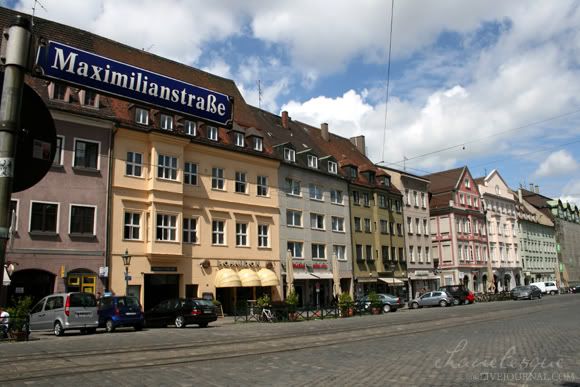
Not for castles, palaces or fortresses does Augsburg (Germany) leave its mark on the romantic tourist. In a city whose old-world royalty consisted after all of wealthy merchants and powerful bankers, it is a street, an elegant boulevard of handsome old mansions, that beckons your imagination of a bygone era when Augsburg was once grand and prosperous.
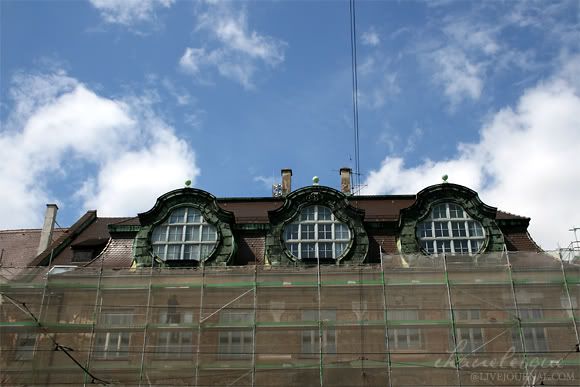
Today Maximilian Street (or locally, Maximilianstrasse) is a comparatively quieter affair. Once proud, patriarchal homes are now offices, cafés, quaint shops, museums, schools, and a drinker's paradise. Evening cocktails at 4 Euros called out to us as we walked by. Occasionally, we met the old house under restoration, such as the Ulrich School (above) with its charming, elaborate dormer windows that I loved.

Our end of the beautiful street starts from the Church of St. Ulrich and Afra. More remarkable than its distinctive onion-domed tower (below) is the fact that the same church is shared by two religions. Today's peaceful co-existence between Catholics and Protestants heralds from the 1555 Peace of Augsburg. The treaty to end years of violent religious war was signed (and honoured till today) at the very same church.

With the tower of St. Ulrich and Afra towards our back, we stumbled upon a newly married couple posing at the Hercules Fountain. Hercules? Isn't that Roman mythology? We later found out that the German city had in fact Roman origins (the name Augsburg came from the Roman Emperor Augustus).
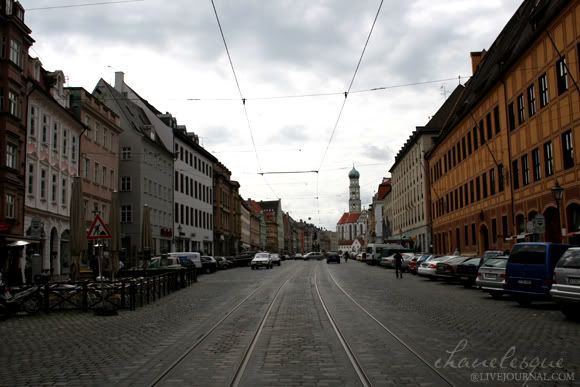
Further up we came to the largest mansion along the street (right above), impressive for its size but positively ugly (what a dull, horrid orange!) for its facade. Do not judge a book by its cover though, for this, my friends, is the old residence of the powerful Fugger family, bankers to kings and emperors such as Maximilian I and the Spanish Hapsburgs. In their day the question "Fugger who?" would have been comparable to the question "Bill Gates who?" in the 20th century (Not an original observation). In their day too, the front of the house used to be beautifully painted all over in fresco like this.
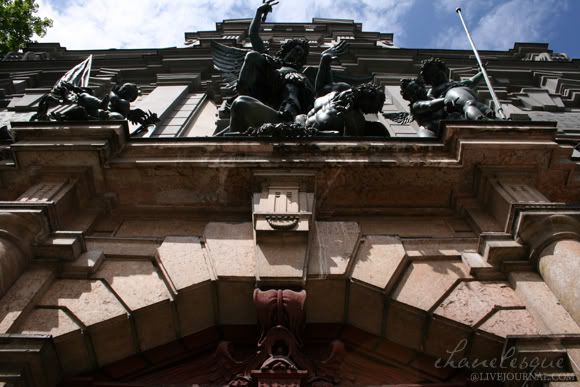
Wandering through the courtyards of the Fugger House we emerged at its back... whereupon we were greeted by the Zeughaus. Befitting, perhaps, of the old purpose of the building (it was once an armory), the majestic sculptures on the portal shows St. Michael the archangel defeating Satan. The Zeughaus now houses an art exhibition.

Mercury was the next Roman deity to receive us, perched atop his fountain. See his winged shoes and his winged hat? Facing him is the colourful splendour that is the Weberhaus (or guildhall of the weavers). If Mercury could speak, he would tell you of how the Fuggers started off humbly enough as weavers, deftly working their way to the top.
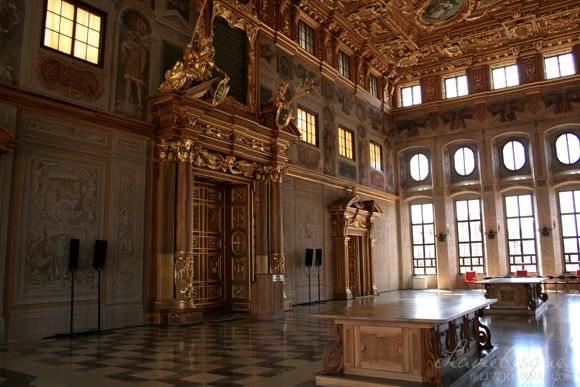
Past Mercury, more houses, and the Tourist Information Centre, and we arrived at the massive building of the historic City Hall. The exterior I did not particularly like, but the pride of Augsburg was said to lie within... so in we went. This above was what we saw, and what a sight it was! All of Schönbrunn (I'm sorry, Vienna) could not compare.
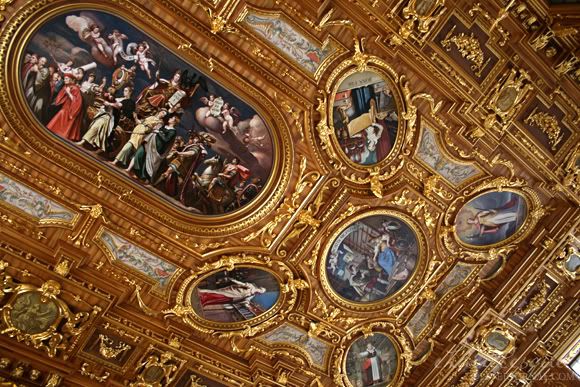
Simply named, the Golden Hall has an impressive, ornate ceiling, a prodigious display no doubt of the city's wealth in olden times. I could stare at it for hours on end. The central painting depicts Wisdom as the most important virtue of all rulers.
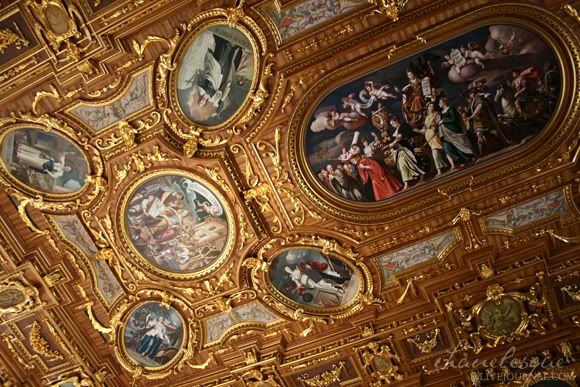
On its west, the central circular painting shows the architect, Elias Holl, with a building plan in hand. The architects of old somehow always found a way to fit their likeness into their work. Self-seeking perhaps, but always interesting.
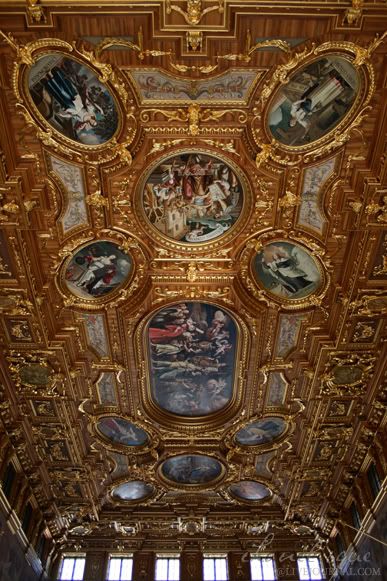
Other oval paintings denote female figures symbolising the qualities of Honesty, Justice, Piety, Strife for Knowledge, Industry, and Prosperity respectively.
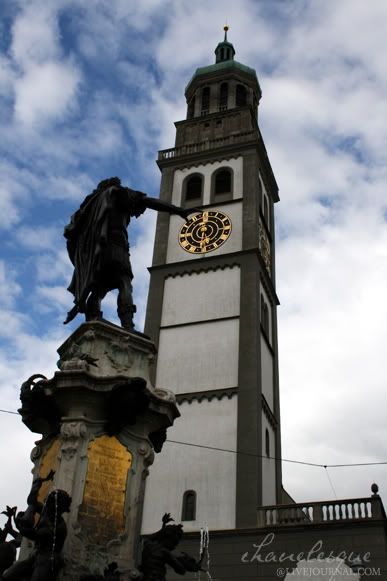
Leaving the Golden Hall at last we turned right to what used to be a guard tower - the Perlach Tower. In front of it we met Emperor Augustus himself, who grandly pointed us towards the direction of Rome. We tried to photograph his outstretched hand as though he were controlling the tower clock. Maximilian Street, by the way, used to be part of the Imperial Highway leading to Rome.

The lower half of the Augustus Fountain was rather grotesque for my taste. Now finding ourselves in the middle of the city square, the Augustus Fountain and Perlach Tower marked the end of our walk up the handsome Maximilianstrasse. Sie macht Spaß, bis bald!

Photography by my dearest Edmund.